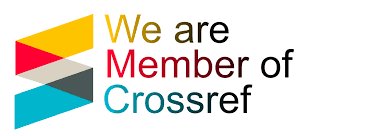VOCATIONAL AND TECHNICAL EDUCATION CONTENT PHYSICAL PHENOMENA FOR THE PURPOSE OF UPDATE USE
DOI:
https://doi.org/10.63034/esr-223Keywords:
physics, professional training, technology, specialist, professional educationAbstract
The main purpose of new pedagogical technologies is to create conditions for the initiative in the organization of educational knowledge, to create a subjective position, to move from passive learning to active learning. In the course of improving the quality of education and adopting a result-oriented model, teachers with a high informational and communicative culture perform a personality-developmental function, able to find a solution to the problem as a result of professionally mastered research skills and skills in achieving the results given by the state standard. The article is intended to prepare students for professional training in modern conditions, to improve the qualifications of teachers of the subject of the use of physical phenomena in order to update the content of professional and technical education. The materials presented in the article are necessary for training a student in the direction of physical and mathematical education.
References
Қазақстан Республикасы «Білім туралы» Заңы
Мұғалімдердің біліктілігін арттыру бағдарламасы, «Назарбаев Зияткерлік мектептері» ДББҦ Педагогикалық шеберлік орталығы, 2016 «Физика» пәні бойынша педагог кадрлардың біліктілігін арттыру курсының білім беру бағдарламасы ДББ Педагогикалық шеберлік орталығы, 2016 Оқу бағдарламалары,
Гладышева Н.К., Нурминский И.И. Методические рекомендации к курсу фи-зики.
М.: НИИ СиМО АПН СССР. -1980.
Гладышева Н.К. Роль исследовательского эксперимента в развитии мышления учащихся // Проблемы прогнозирования физического образования.
Сборник научн. трудов. Под ред. Пинского А.А. М.: 1986.
Published
How to Cite
Issue
Section
Categories
License
Copyright (c) 2024 Расол. А, Кульбаева К, Исабекова М

This work is licensed under a Creative Commons Attribution 4.0 International License.





